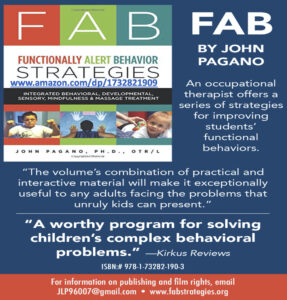I recently attended an introductory Focusing-oriented therapy course taught by Dr. Robert Lee in New York City. Focusing-oriented therapy guides clients to access a “felt sense” of their body for problem solving and improved mental health. A listener empathetically guides the focuser through a sequential process of integrating consideration of an issue, their bodily “felt sensing”, and self-empathy (Whalen, 2013; Lee, 2019).


A case study illustrates the therapeutic usefulness of focusing-oriented therapy and body mapping in helping an adolescent reconnect to her body and feelings. Accessing the numb and distorted areas of her body significantly improved her Post-Traumatic Stress Disorder and body dissociation symptoms (Santen, 2013). Focusing-oriented therapy and MABT https://www.cmbaware.org/are approaches that appear to improve interoceptive awareness, our conscious awareness of our internal body sensations. Improvement in interoceptive awareness is associated with improvement in the symptoms of Post-Traumatic Stress Disorder, chronic pain, substance abuse, anxiety, depression, and Autism Spectrum Disorder symptoms (Khalsa et al., 2018).
Interoceptive awareness and sensory processing are both atypical in Autism Spectrum Disorder and appear to contribute to its symptoms and relationship to problematic behavior. The relationship between interoceptive awareness and sensory processing difficulties associated with behavior problems suggests the need for multidisciplinary collaboration and an updating of sensory processing theory to better address mental illness (DuBois et al., 2016; DuBois et al., 2017).
Focusing-oriented therapy and MABT interoceptive awareness strategies offer a helpful expansion of sensory processing interventions that teaches students with complex behavioral challenges to identify their triggers. Interoceptive awareness is our conscious awareness of internal body signals. Focusing-oriented strategies (Santen, 2013) increases awareness of our intern body sensations. Combining these interoceptive strategies can promote students’ awareness of early body triggers and ability utilize coping strategies to avoid aggressive behavior (Price & Hooven, 2017).
I ask students to circle their 3 major body triggers from a series of pictures

I also ask clients with complex behavioral challenges to draw and paste body parts to form a picture of a girl and to draw or color, cut and paste their major body triggers. When adolescents are calm I encourage them to discuss their anger and feelings, and to begin to apply interoceptive awareness and their felt sense to identify the body triggers that emerge when they first begin feeling dysregulated.

Exploring students “felt sensing” of body signals and using self-touch to increase awareness of body triggers can facilitate earlier recognition that they are beginning to feel dysregulated. Interoceptive awareness strategies have the potential to help occupational therapists increase client’s awareness of their early body triggers for dysregulation, and begin to use coping strategies when they initially experience distress so they can avoid aggression (Lee, 2019; Price & Hooven, 2018; Whalen, 2013).
Information about using pictures of environmental and body triggers and many other strategies are available in my new FAB Strategies book available in paper back and e-book on Amazon https://www.amazon.com/dp/1732821909

References
DuBois D, Lymer E, Gibson BE, Desarkar P, Nalder E. Assessing sensory processing dysfunction in adults and adolescents with autism spectrum disorder: a scoping review. Brain sciences. 2017
DuBois D, Ameis SH, Lai MC, Casanova MF, Desarkar P. Interoception in autism spectrum disorder: A review. International Journal of Developmental Neuroscience. 2016 Aug 1;52:104-11.
Khalsa SS, Adolphs R, Cameron OG, Critchley HD, Davenport PW, Feinstein JS, Feusner JD, Garfinkel SN, Lane RD, Mehling WE, Meuret AE. Interoception and mental health: a roadmap. Biological Psychiatry: Cognitive Neuroscience and Neuroimaging. 2018 Jun 1;3(6):501-13.
Lee RL. Domain Focusing self-guide & commentary. 2019.
Price CJ, Hooven C. Interoceptive awareness skills for emotion regulation: Theory and approach of mindful awareness in body-oriented therapy (MABT). Frontiers in psychology. 2018;9.
Santen B. Into the fear-factory: Connecting with the traumatic core. Person-Centered & Experiential Psychotherapies. 2014 Apr 3;13(2):75-93.
Whalen K. Working with incongruence in a Wholebody Focusing Oriented approach to psychotherapy: towards a mutuality of shared presence. Person-Centered & Experiential Psychotherapies. 2013 Sep 1;12(3):288-303.
